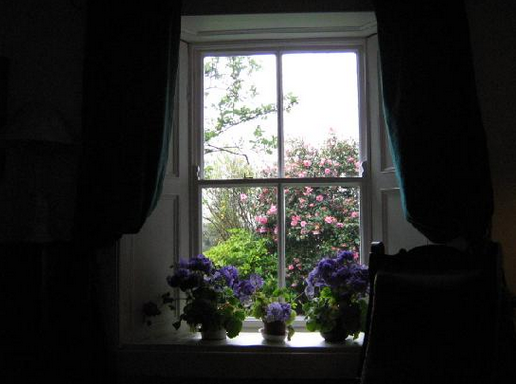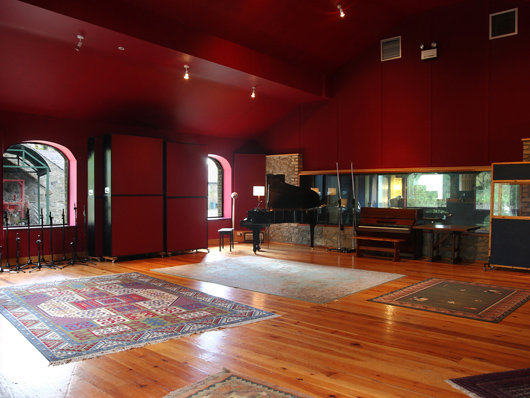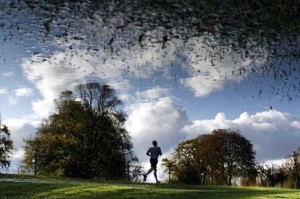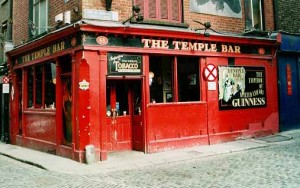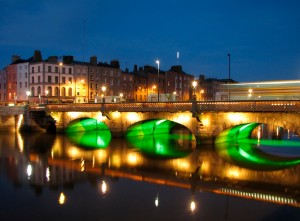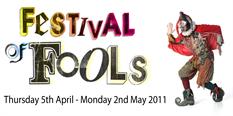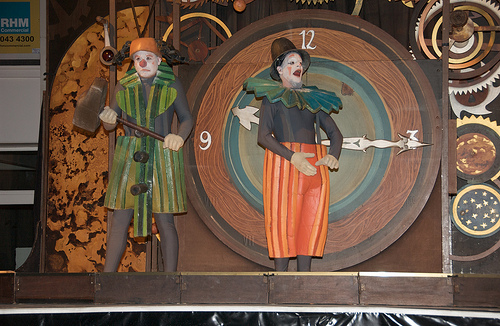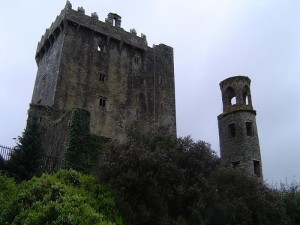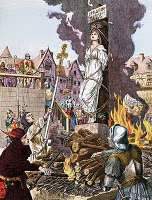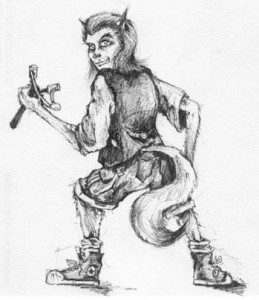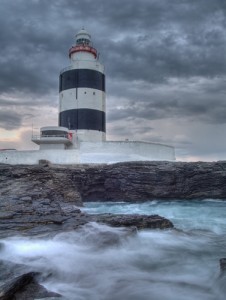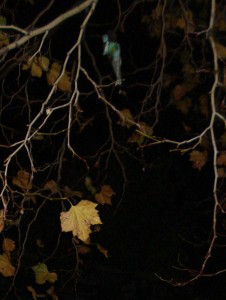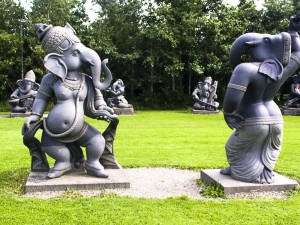 Some statues at the Indian Sculpture Park at Victoria’s Way near Roundwood, Co Wicklow
Some statues at the Indian Sculpture Park at Victoria’s Way near Roundwood, Co Wicklow
Sri Ganesh Pilgrimage In Ireland? If somebody else had told me this, I would have sworn that this was a classic case of having my leg pulled.. But as I found out, it is absolutely true. It is well known that over the past few hundred years, Hindus have migrated to all corners of the world. Wherever they have gone, they have taken their deities with them. Soon the deities have been housed in temples. The common factor in establishing deities and temples has been emigrant Hindus.
This one in Ireland is different. How? Let me start from the beginning.
Late last year I had read in one of the Marathi newspapers from India that just south of Dublin, there is a park that houses some huge idols of Lord Ganesh. No further information could be gleaned from the newspaper itself. So with the help of the internet and through telephone conversations with the proprietor of the park and the local bus company in Dublin, I gathered as much information as I could.
Early one morning I left London, where I live, for Dublin.Unusually for Dublin, it was cloudy but dry, although quite cold. Southeast of Dublin, in county Wicklow, there is a small village called Roundwood. That was my first destination. There is only one bus a day from Dublin to Roundwood and back. The bus arrived and left Dublin on time. The driver dropped me off at Roundwood. When I mentioned the Park to him, his response was “Never heard of it”. Strange, I thought, as the Park had been in existence for a few year. To call it a park is a bit of a misnomer. It is in fact, a 22 acre field. All that grows there is grass and the trees that the owner, Victor Langheld has planted.
Victor was supposed to pick me up in his car, as there is no public transport to the park itself and it is about a mile and a half from Roundwood. But there was confusion about which stop I was supposed to get off at and the one I actually disembarked at. After waiting outside a pub for over 45 minutes, in freezing cold weather, I decided to enter the pub and ask for direction, since it had started to drizzle. The barmaid gave me the directions and asked if I would prefer to go by taxi, since it was a fair bit to walk. Eventually, a taxi turned up, apparently the ONLY ONE in the village ! As I was getting out of the taxi at Victoria’s Way Park, Victor drove in. Apparently he had been waiting for me, a stop further down the road. After mutual introductions and a very brief description of the nature of the exhibits, Victor left me to wander off on my own. For the next couple of hours, what I saw in the Park and later what Victor told me about himself, will remain with me for the rest of my life.
There are 9 Ganesh idols in the Park. Apart from one sitting idol of Sri Ganesh, reading a tome, all the others are either dancing or playing a musical instrument. The Victoria’s Way collection of black granite Ganesh (Vinayaka) took about 9 years to design, model and carve. The sculptures range in size from 5ft 6ins to 9ft and weigh between 2 and 5 tonnes. The sculptures were envisioned and sketched in Roundwood in Ireland by Victor, then modelled by the artist D.V. Murugan in Mahabalipuram (Mamallapuram), Tamil Nadu, India. They were carved in Mahabalipuram by an outstanding sculptor, the stapathi master T. Baskaran.
In addition to the Ganesh idols, there are idols of Lord Shiva, Durga Devi, and a fasting Buddha, amongst others.
Victoria’s Way is a mini pilgrimage that guides the pilgrim from spiritual birth. Passing through the Creation Gate, the pilgrim encounters the different sculptures of Lord Ganesh, who helps the pilgrim reach the wellspring of his spiritual journey. Then the wanderer enters an enchanted forest where he comes across sculptures that symbolize the crossroads of the spiritual quest. They encourage the pilgrim to meditate, and move forward to the final goal: realisation of the true self. A magnificent 15 ft bronze of the future Buddha represents the ascetic phase through which all pilgrims must pass.
While I was wandering through this field, clicking away with my old-fashioned camera, it was continuing to drizzle and the mercury was dipping gradually. Finally, when my fingers refused to co-operate with my desire to capture images, I retired to the comparative warmth of Victor’s office. We talked for the best part of an hour. What Victor had to tell me was just as fascinating.
Victor was born of German Jewish parents in Berlin in 1940. Before the Second World War began, Victor’s father came to England to start a business. The onset of the war made it impossible for Victor and his mother to escape from Germany. So Victor and his mother left Berlin and moved to Dresden. In the meanwhile, Victor’s father was interned by the British, as he was a German, albeit a German Jew. Victor and his mother were extremely fortunate to escape the fierce bombing of Dresden by the Allies. Finally, at the end of the war, Victors father was freed from internment and Victor and his mother could join him in England. The family were again joyously united.
Soon afterwards, Victor’s father moved to Ireland and settled there with his family. Victor himself started his primary education in Ireland. By the age of 14, he had decided to go to India, keen to become a sadhu and spend his life in the pursuit of enlightenment. Before he had reached 25, Victor was in India. Thereafter, he spent the next 25 years as a wandering monk in India, learning about Hinduism, Buddhism, Yoga, studying the Vedas and Upanishad. He spent some time at the Arobindo Ashram in Pondicherry. He travelled widely through India, spending time at various ashrams, under the tutelage of many gurus. He also travelled to the Far East.
After returning to Europe, he enrolled to study Economics at Munich University. After the second year at Munich University, he decided that such material knowledge was not for him. Accordingly, he returned to Ireland. His frequent visits to India continued on the path of his deep and intense spiritual search.
During his long stay in India, not only did he came to love the country, but his own devotion to Sri Ganesh, arguably the most beloved of the gods, grew. That gave him the idea of starting a Ganesh Park in Ireland. Once the idea took root, it took 20 years for that dream to become reality.
Shipping statues weighing a few tons each, does not come cheap. But with tenacity, determination and financial provision made by his father, Victor realized his dream. Currently, he has no plans to import any more idols to Victoria’s Way Sculpture Park.
During his long stay in India, Victor learnt that we Indian are absolutely cricket mad. To pay tribute to that passion, he designed a mouse, wearing a cricket cap, with a transistor radio, slung on its shoulder. This venerable vahan or vehicle of Lord Ganesh stands behind the tabla playing Ganesh.
Indian devotees of Ganesh, make a pilgrimage to 8 shrines of Ganesh, scattered all over Maharashtra state. It takes 2 to 3 days and can be exhausting. From London to Roundwood, Ireland, a similar pilgrimage can be completed in one day. I advocate it as a worthy experience.
Manohar V. Rakhe
2009
http://www.indiatravelogue.com/trav/ganesh_in_ireland.html
Average Rating: 4.9 out of 5 based on 151 user reviews.
